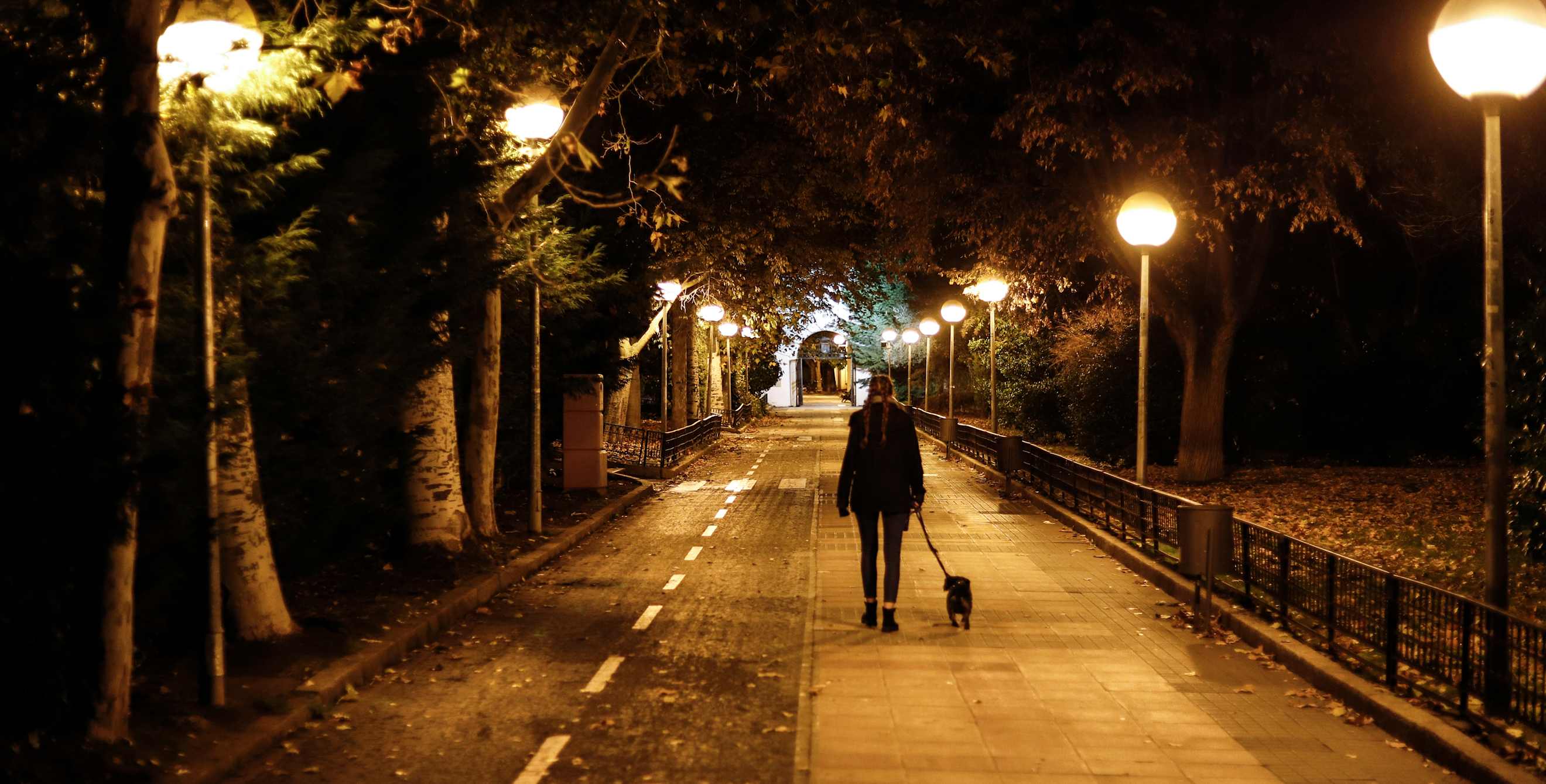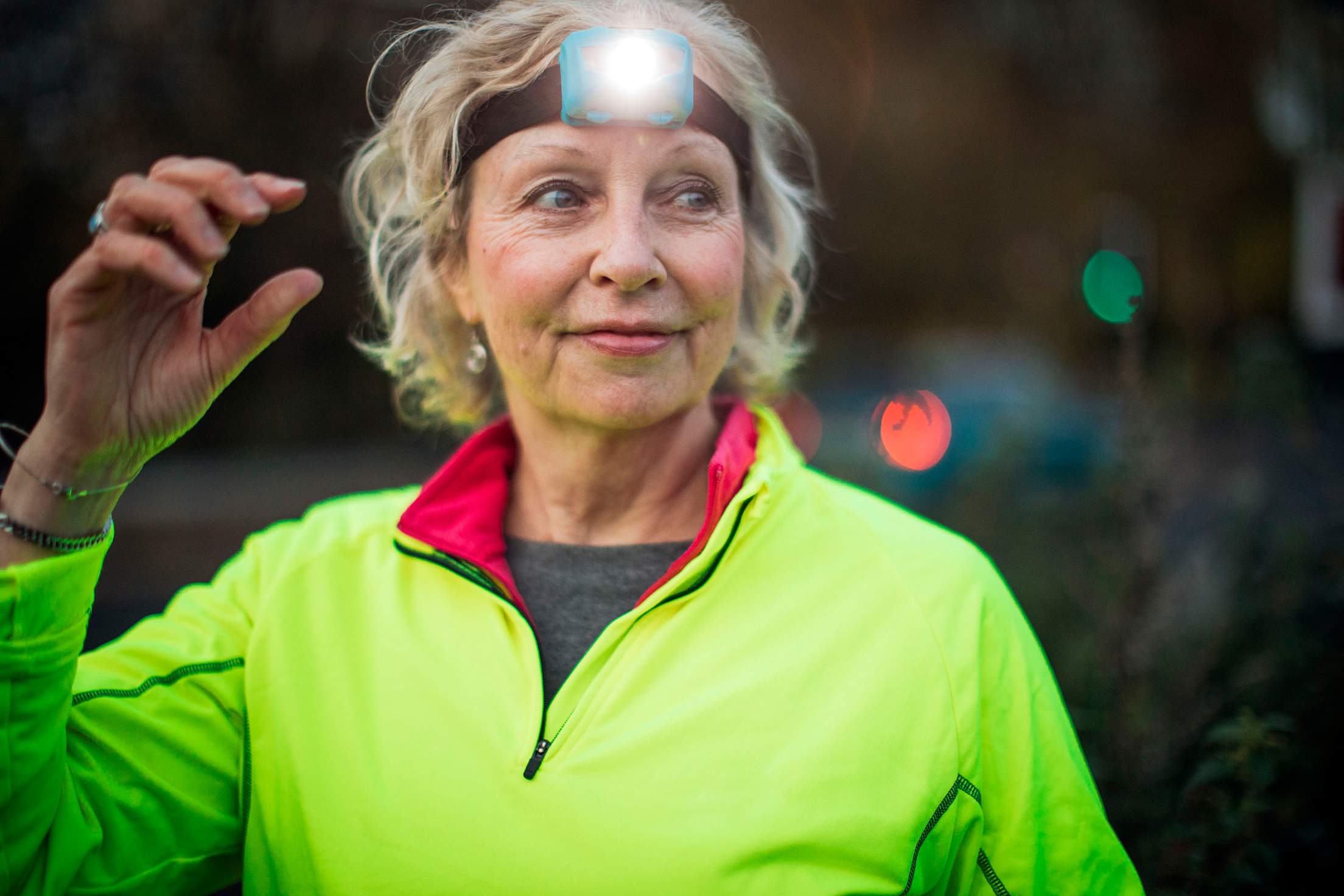
How to Walk, Run, and Ride in the Dark and Be Seen
Boost your visibility at dawn and dusk to stay safe.

Ready or not, the days are getting shorter. For early bird and evening walkers, runners, and cyclists, that means you’re recreating in the dark. Here’s what you can do to stand out and stay safe in low light and dark conditions as the season changes.
Pick well-lit, lower-traffic routes.
Before biking, walking, or running somewhere in the dark, get familiar with your route during the day. Then, get to know the traffic pattern at the time of day you plan to be in the area. If traffic is heavy and there are many street crossings, consider a different route to avoid run-ins with commuters.
Because there aren’t many lights or sidewalks in her neighborhood, Salt Lake City-based, semi-professional runner Liz Lagoy likes to find well-lit public areas like parks, which are removed from streets, well populated, and created for recreation. “You can see the ground and it’s safer than the sidewalks,” she says. “I just feel more comfortable running there in the darker hours.”
Gear up with reflectors.
Even before heading out the door, safety starts with your clothing choices. Opt for brighter colors over darker, and look for clothing with reflective details that illuminate when headlights shine in your direction. Increase your chances of being seen even more by bringing along reflective accessories, lights, and other high-vis gear. “All these things can help make other road users aware that a bicyclist [or pedestrian] is sharing road space,” says Kevin Claxton, interim executive director at California Bike Coalition. Gear can include:
- Front white light and back red light for your bike
- Headlamp or flashlight
- Reflective clothing, accessories, and helmets
- High-visibility vest, like this one
- Red clip-on lights for the back of clothing or hats
- Reflective harness or a collar light, if you’re walking or running with your dog

Communicate your intentions.
When you encounter a motorist, hand signals and eye contact can go a long way. As a cyclist, always use hand signals before turning left and right. Other useful signals on wheels or on foot include a wave or thumbs up, if you aren’t able to use your words. “Anything we can do to communicate our intentions and the space we are occupying to other road users is going to be a benefit,” Claxton says.
At street crossings, Lagoy uses her gear for visibility but also communication. “Since I run with a headlamp, I like to turn my head and make sure my lamp goes right into their car so they see me,” she says.
Obey road rules.
Pedestrians and cyclists are expected to follow certain rules of the road, such as running or walking against traffic when there’s no sidewalk. If you’re facing traffic on the shoulder, move further left to allow bikes to safely pass in the bike or traffic lane and avoid forcing them into traffic. Cyclists must travel in the same direction as traffic, follow road signs, never exceed speed limits, and always stop for pedestrians.
Stay alert.
Just like when you’re driving, it’s safest to never assume other road users see you, and that’s especially true when visibility is restricted during low-light times or in wet or foggy conditions. In addition to following the recommendations above, pedestrians and cyclists should use even more caution than during the day. Lagoy avoids using headphones during dawn and dusk so she can hear cars and fellow pedestrians approaching. And at street crossings, she waits until a car is completely stopped before entering the road. “I definitely feel like I’m a better driver just from being a runner,” she says.